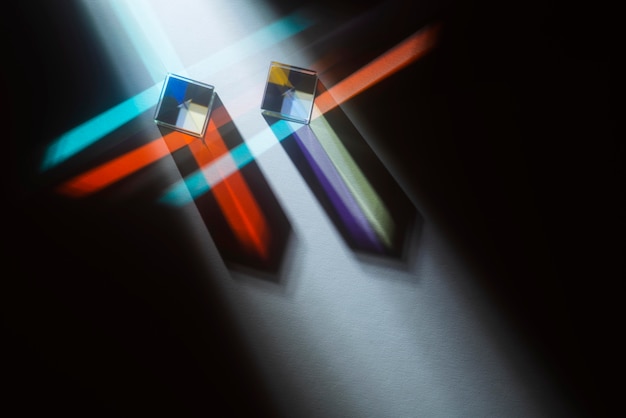Home » Press Bulletin and Blog » How to Identify a Lab-Grown Diamond
In recent years, Lab-Grown Diamonds have gained popularity as they offer many of the same qualities as genuine diamonds at a lesser price. Consumers must be able to tell the difference between Lab-Grown diamonds and natural diamonds, though, as there can be a sizable price difference between the two. Additionally, lab-grown diamonds are occasionally marketed as genuine diamonds, which can leave customers perplexed and dissatisfied. For customers, jewellers, and appraisers to make educated decisions and safeguard themselves from fraud, they must be able to recognise lab-grown diamonds and thankfully there are diamond detection machines now to help them. Utilising UV Spectrum technology, a non-destructive and effective approach to distinguish between Lab-Grown diamonds and natural diamonds, is one way to recognise lab-grown diamonds.
What is UV spectrum technology and how does it work?
A technique for identifying diamonds called UV Spectrum technology makes use of the special fluorescence characteristics of diamonds under ultraviolet (UV) light.
Fluorescence is the process through which diamonds can absorb ultraviolet light and then re-emit it as visible light. Under UV light, this fluorescence may be seen, and depending on the type of diamond, the fluorescence’s hue and strength can change.
The science behind it:
Diamond colour is typically the consequence of white light that is incidently being selectively absorbed. The diamond transmits the unused component of this light, which is then perceived as colour by the human visual system. A graph has been created to show the visual spectra of different coloured diamonds as measured by a spectrophotometer at low temperatures (liquid nitrogen). The chart that is referred to by the industry in general, demonstrates how various light absorption patterns can produce colours that are similar in diamonds. According to a paper in the GIA, the primary optical flaws that can occur in diamonds at the atomic lattice level were listed in a straightforward graphic that the authors released in 2013. (Shigley and Breeding, 2013). The chart included some fundamental details on those flaws, including the ones in charge of the majority of diamonds’ hues and UV fluorescence reactions.
Theoretically, an entirely colourless diamond with no flaws would have transparency, or the inability to absorb light, spanning a large chunk of the electromagnetic spectrum, from the ultraviolet through the visible and into the infrared. However, the spectra of all real diamonds have intrinsic absorption characteristics. The majority of diamonds also have lattice flaws, which, in sufficient quantities, can result in the selective absorption of incident light. (In these cases, the lattice flaws are frequently called optical flaws.) Some of the white light that strikes a polished diamond is reflected, while the remaining light enters the diamond and is refracted and scattered according to wavelength.
Here’s what you need to do to use a UV spectrum to uncover the truth:
- Obtaining a UV light source is the first step in UV spectrum analysis. UV light sources include UV lamps and UV flashlights.
- Examine the diamond under UV illumination – Place the diamond under the UV illumination and watch the fluorescence. It’s vital to keep in mind that not all diamonds glow; in this situation, the diamond should be regarded as natural.
- Note the colour and intensity of the fluorescence – Take note of the fluorescence’s colour and intensity. The fluorescence of Lab-Grown Diamond differs from that of real diamonds in most cases.
- Evaluate the results in comparison to a reference chart – Evaluate the fluorescence’s hue and intensity in comparison to a reference chart of known fluorescence of lab-grown diamonds.

Evaluate your results:
Under UV light, natural diamonds often fluoresce blue. Some naturally occurring diamonds have a bright blue fluorescence, whereas others have a faint or nonexistent fluorescence. Although it is uncommon, it is also known that natural diamonds can fluoresce in additional colours like yellow, green, and red.
However, when exposed to UV light, Lab-Grown Diamonds can fluoresce in a variety of colours, including yellow, orange, and red. Compared to natural diamonds, the fluorescence is distinct in colour and intensity. Because they are produced in a controlled environment and contain fewer imperfections than natural diamonds, Lab-Grown Diamond have a tendency to glow more intensely than natural diamonds.
But,
Why should you use UV spectrum technology to detect lab-grown diamonds?
- The fact that UV Spectrum technology is a non-destructive means of identifying lab-grown diamonds is one of its key benefits. UV Spectrum analysis can be done without harming the diamond, in contrast to other techniques like microscopy, which call for extracting a sample from the diamond. This is especially advantageous for expensive or rare diamonds.
- Efficiency is another benefit of UV Spectrum technology. The analysis is quick to complete, and the interpretation of the findings is simple. This is especially helpful for jewellers and appraisers who must quickly identify a large number of gems.
Due to the different fluorescence that both naturally occurring diamonds and lab-grown diamonds exhibit under UV light, UV Spectrum technology enables a noticeable separation between the two varieties of diamonds, aiding in the prevention of fraud and guaranteeing that customers receive what they pay for. Utilizing the special fluorescence characteristics of diamonds under ultraviolet (UV) light, it is a non-destructive, effective, and precise approach. It is crucial to know how to recognise lab-grown diamonds and by associating with DRC you can do this easily! Speak to our experts if you want to know more about our diamond detection machines.
Visit our website: https://drcindia.in/
Stay connected with us to learn more tips and tricks. All you have to do is follow us here:
Facebook: https://www.facebook.com/DRCPVTLTD
Instagram: https://www.instagram.com/drcpvtltd/
YouTube: https://www.youtube.com/@DRCIndia
LinkedIn: https://www.linkedin.com/company/14385983/admin/
Written by:
Pinaki Kotecha
Affiliate Writer with Monkey Ads




